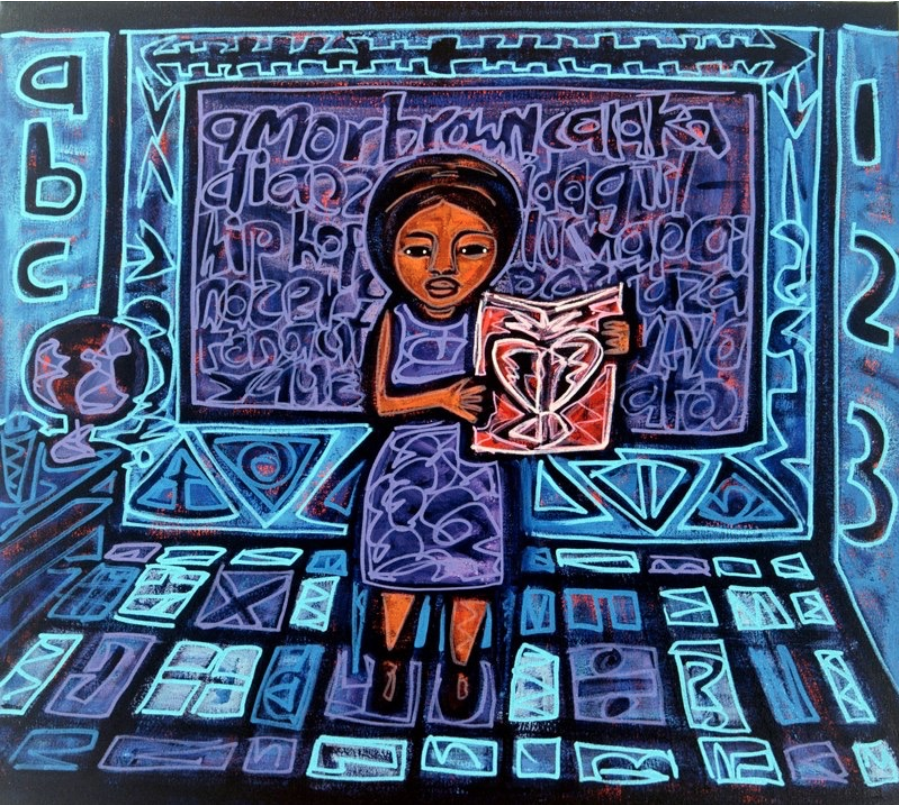 I mentally stomped my feet when our counseling faculty recommended that, to better accommodate students, I offer my English 101 course, which is contextualized for first responders and administration of justice majors, online.
I mentally stomped my feet when our counseling faculty recommended that, to better accommodate students, I offer my English 101 course, which is contextualized for first responders and administration of justice majors, online.
But I’m an English professor, I thought. My bread and butter is helping students tease nuance out of text. My job is to steer them toward recognizing a strong critical interpretation while I watch for faces to blink on like a row of streetlamps, circling back to any that are still flickering. In my discipline, I sit with students, knee to knee, eye to eye, and ask them to “read that back to me,” so they can discover for themselves where their prose falters and, together, we can figure out how to improve it. None of this is online work. This is real human connection in the real human world.
After thinking through my discipline-based worries, it appeared I had epistemological ones as well! Isn’t face to face something that our younger students need more of anyway? Don’t they spend enough (way too much!) time on their devices already? And aren’t the socio-emotional skills that are derived from our courses the skills needed to navigating the real world? Such as the skills of problem-solving and working together that come from cooperative learning. Such as the ability to engage in respectful, challenging dialogue with others. Such as the skill of artfully and persuasively expressing their ideas to others.
Yes!
And no.
Making a Mindshift
I have been teaching for some time in the manner in which I settled on in graduate school pedagogy courses. My face-to-face classes mostly go very well. I thrill in the strides my students make, in the many recommendation letters I write, and in the students who keep in touch over the years, and who attribute some of their success to what they learned in my courses. Yet, in my resistance to online teaching, I was neglecting three crucial tenets of teaching: meet students where they are, use content and methodologies that are authentically relevant for students, and let data inform pedagogy.
After a little light research, I began to understand that the skills of critical analysis and expression are needed, perhaps in even more abundance, in the written world (a world whose presence has, perhaps most surprising to us English instructors who were told it was disappearing entirely, only increased). Students are communicating greater and greater portions of their lives through the written word. Between texting, emailing, and social media of all sorts, they are navigating much of the public sphere, the work sphere, and their intimate social spheres, through reading and writing. And I came to believe that students are not being challenged well enough around their virtual written presence.
So I decided to give this online thing a go.
Learning from Peers
Now, I am not afraid of serious effort. I love a good challenge. The phrase it’s going to be a lot of work is more likely to make my eyes light up than to scare me. But online teaching nearly did me in! As many of you know, online differs radically from face-to-face teaching. In order to make my courses meaningful and steer my students toward the outcomes that my face-to-face students achieve, I had to rethink everything.
I was lucky to have friends and colleagues in the DE world who could mentor me. I was able to look at archived examples of online courses that showcased the best and the worst of what can be done in the online format. I saw courses whose instructors who were clearly “phoning it in” and teaching the dreaded “correspondence course.” Those courses echo the most jaded beliefs about online teaching -- that online instructors simply “set it and forget it,” loading a course with multiple choice quizzes and pre-recorded lectures and letting a machine take over. But I also saw courses of great beauty – courses where I wondered how the instructor had time to sleep or eat, so hearty was the ongoing engagement, feedback, and “real-time” response targeted toward each student.
In viewing these outstanding courses, I saw possibilities for a shift in my own discipline-based pedagogical assumptions. What if, instead of looking students in the eye, and prizing their ability to verbally articulate their ideas, what if I were to meet students at their written words and, through a steady stream of “low-stakes” writing assignments, guide them toward thoughtful expression which carefully considers a variety of perspectives and evidence? What if I could go one step further and, through requirements, rubrics, and feedback on their feedback, teach them how to evaluate the written expression of others for these same traits?
Embracing the Differences Online Learning Provides
Thus began my conversion to becoming an online instructor in earnest. Through workshops, trainings, and trial and error, I learned that careful, creative, objective-oriented planning, and consistent communication and follow-through, can create a learning environment in which students can go as far, and perhaps further, than in a face-to-face environment.
In my online courses, students experience a near-daily stream of individualized, yet public, feedback on their writing, as well as private feedback on higher stakes writing assignments. I am able to guide students not only in their own writing assignments, but also in how to provide guidance to other students, who then use that to provide further guidance, which in turn has its own feedback loop, from me, and from peers. And if that sounds like the verbal equivalent of an M.C. Escher painting, I admit that managing the class does sometimes feel just like that. Yet, although class management is complex, the payoff is astounding. I have been seeing students make leaps in achieving clear, thoughtful analysis much earlier in my online classes than in my face-to-face classes. And I am seeing a pattern of stronger overall gains as well.
That discovery alone has been extraordinary. Additionally, I have learned how important online teaching is to student equity. Online courses are a way to level the playing field for students with disabilities, for students with work and family commitments that preclude commute time and campus involvement, and for students with intermittent or “on demand” jobs whose schedules are not consistent.
On the other hand, I am finding online teaching to be more time consuming than face-to-face teaching. While this is certainly a challenge, I’m also energized and motivated by my own feelings of discovery and exploration. Online teaching is newly charted territory and there is a lot to learn, with new data, new or improved technological tools, and pedagogical innovation happening all the time. It is clear to me that there are new discoveries yet to be made, and I am honored to be working with the DE mavericks at my institution, and at @ONE and the OEI.
It’s hard to believe how resistant I once was. These days, when I log into my online courses, I see a vibrancy of student connection and learning. It reminds me of a row of streetlamps coming on, virtually but brightly, one by one.






